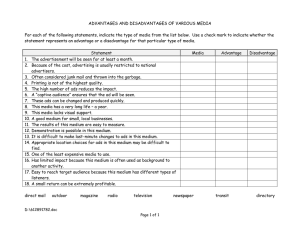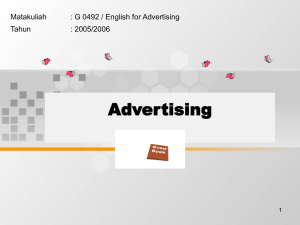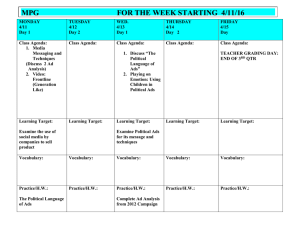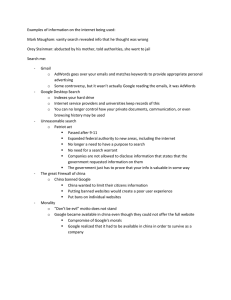Competition for Google AdWords
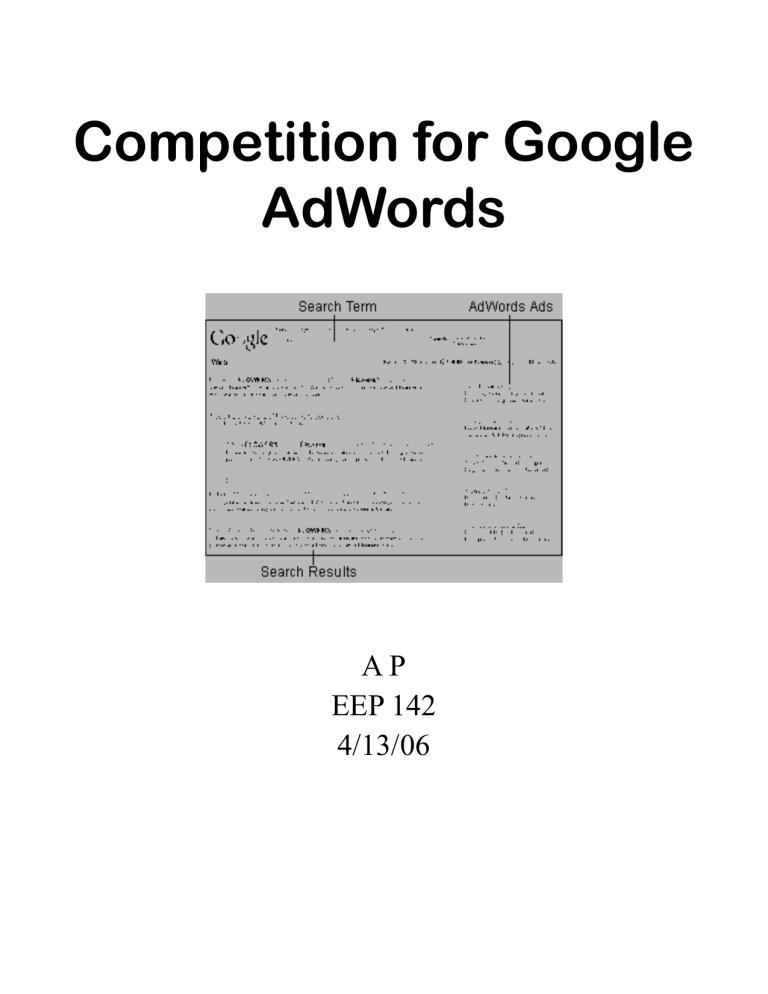
Competition for Google
AdWords
A P
EEP 142
4/13/06
Company Overview
• incorporated in 1998
• stock valuation over $100 billion
• $6.1 billion revenue in 2005
• $1.5 billion accounting profits in
2005
Two main advertising programs
• AdWords
– Ads on search results pages, either above “organic listings” in a gray box or on the side of the page
– Targeted to keywords searched
• AdSense
– Ads appearing on other websites
– Generates $2.7 billion/year, but site host keeps about 80%
AdWords basic policies
• Custom, local, regional, national and international view options
• Cost-per-click (CPC) and cost-perthousand views (CPM) options
• Time-of-day options
• $5.00 to start advertising; no minimum monthly bill
AdWords pricing and placement
• Advertiser sets a cost-per-click max anywhere from $0.01 to $100.00
• Advertiser sets a daily max to control costs
• Electronic auction: “smart pricing” model automatically sets bid 1¢ higher than nearest rival
• Max cost-per-click and “quality score” determines position on list
“Quality score” and placement
• Quality score is a function of :
– Max cost-per-click bid
– Click-through rate
– Relevancy of ad text to user’s keyword search
• Advertisers want high quality scores because :
– Quality scores determine list order
– Users are more likely to click on ads at the top
– Ads below the top seven often won’t appear on the first page
How Google maximizes
AdWords revenue
• Total revenue-per-page:
– TR = Σ(p i
*q i
)
– q
1
= # of clicks on a given ad
– p
1
= $ per click on that ad
– Google maximizes revenue by charging high p to the ads with high q through
“quality”-based placement
(People are more likely to click on links at the top, and are more likely to click on links relevant to their search)
– Firms compete for top spots, raising p
Perfect price discrimination?
• No, because advertiser is only charged its exact willingness to pay when another firm is actively competing for the same spot
– Knowledgeable advertisers can get good results with relatively low cost keywords
• Also, presence and intensity of competition varies by geographic location of the user’s IP address
Advertisers’ shady behavior
• Using rival’s trademarks
– Generally legal in the U.S. to use rival’s trademarks in metatext (code invisible to user), but illegal to use rival’s trademarks in ad text visible to user.
– Example: another insurance company using “Geico” as a keyword, benefiting from Geico’s broadcast media ads
– As yet, no definitive court cases on trademark use in unseen code
More shady behavior
• Raising rivals’ costs:
– Using software that clicks on rivals’ ads and makes it look like each click is coming from a different computer
– Hiring low-wage workers in other countries to click on rivals’ ads
• Google writes code that identifies simple click-fraud operations, and sometimes issues refunds to advertisers
Conclusion
• Google tries to maximize AdWords revenue by offering many options and letting competition for placement drive up prices
• Google’s auction system absorbs consumer surplus for competitive keywords, varying by user’s location
• Some advertisers try to use rivals’ trademarks or raise rivals’ costs
